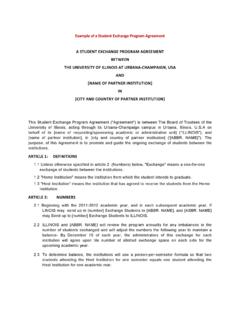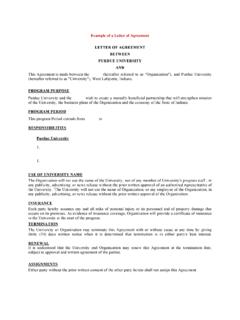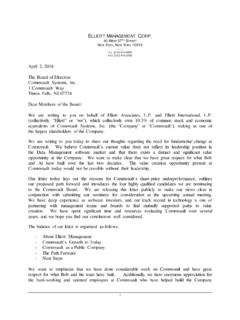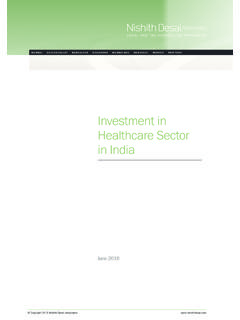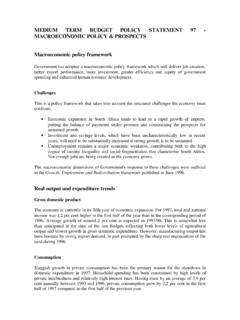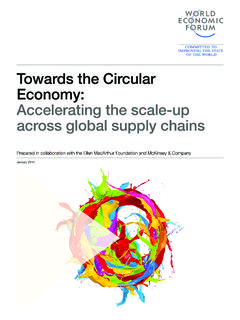Transcription of Collaborations with Foreign Universities - Indus
1 Collaborations with Foreign Universities Research Collaborations Joint / Dual Degree Programs Certificate Programs Twinning / Transfer Programs Distance Education Programs Vocational Education Programs Faculty Exchange Programs Student Exchange Programs Partnership Programs Study Abroad in India Programs collaboration Methodology International Invitees THE Indus FOUNDATION INC. 23 Koster Blvd., Suite 8B, Edison, NJ 08837, USA Tel: (732)205-9810; Fax: (732)205-9811 E-mail: ; Web: 2 Academic Collaborations India is rushing headlong toward economic success and modernization, counting on high-tech industries such as information technology and biotechnology to propel the nation to prosperity. Unfortunately, its weak higher education sector constitutes the Achilles' Heel of this strategy. Its investment so far in higher education has yielded neither world-class research nor very many highly trained scholars, scientists, or managers to sustain high-tech development.
2 India's main competitor especially China is investing in large and differentiated higher education systems. China is providing access to large numbers of students at the bottom of the academic system while at the same time building some research-based Universities that are able to compete with the world's best institutions. The recent London Times Higher Education Supplement ranking of the world's top 200 Universities included three in China, three in Hong Kong, three in South Korea, one in Taiwan, and one in India (an Indian Institute of Technology at number 41 the specific campus was not specified). These countries are positioning themselves for leadership in the knowledge-based economies of the coming era. There was a time when countries like India could achieve economic success with cheap labor and low-tech manufacturing.
3 Low wages still help, but contemporary large-scale development requires a sophisticated and at least partly knowledge-based economy. India has chosen that path, but finds a major stumbling block in its university system. India has significant advantages in the 21st century knowledge race. It has a large higher education sector the second largest in the world in student numbers, after China. It uses English as a primary language of higher education and research. It has a long academic tradition. Academic freedom is respected. There are a small number of high quality institutions, departments, and centers that can form the basis of quality sector in higher education. Yet the weaknesses far outweigh the strengths. India educates approximately 14 per cent of its young people in higher education compared with more than 50 percent in the major industrialized countries and 25 per cent in China.
4 Almost all of the world's academic systems resemble a pyramid, with a small high quality tier at the top and a massive sector at the bottom. At present, the world-class institutions are mainly limited to the Indian Institutes of Technology (IITs), the Indian Institutes of Management (IIMs) and perhaps a few others such as the All India Institute of Medical Sciences and the Tata Institute of Fundamental Research. These institutions, combined, enroll well under per cent of the student population. Even the small top tier of higher education faces serious problems. Many IIT graduates, well trained in technology, have chosen not to contribute their skills to the burgeoning technology sector in India. Perhaps half leave the country immediately upon graduation to pursue advanced study abroad and most do not return.
5 A stunning 86 per cent of students in science and technology fields from India who obtain degrees in the United States do not return home immediately following their study. A corps of dedicated and able teachers work at the IITs and IIMs, but the lure of jobs abroad and in the private sector makes it increasingly difficult to lure the best and brightest to the academic profession. India has survived with an increasingly mediocre higher education system for decades. Now as India strives to compete in a globalized economy in areas that require highly trained professionals, the quality of higher education becomes increasingly important. So far, India's large educated population base and its reservoir of at least moderately well trained university graduates have permitted the country to move ahead. But the competition is fierce.
6 China in particular is heavily investing in improving its best Universities with the aim of making a small group of them world class in the coming decade, and building them as internationally competitive research Universities . Other Asian countries are also upgrading higher education with the aim of building world class- Universities . To compete successfully in the knowledge-based economy of the 21st century, India needs enough colleges and Universities that not only produce bright graduates for export but can also support sophisticated research in a number of scientific and scholarly fields and produce at least some of the knowledge and technology needed for an expanding economy. How can India build a higher education system that will permit it to join developed economies? Academic collaboration programs between the Foreign Universities and Indian institutions and organizations are aimed at meeting the rapidly growing Indian educational needs by leveraging mutual capabilities.
7 A part of the core mission of all educational institutions is to prepare their students to compete in the global economy. These collaboration programs contribute to that goal by giving students and faculty members international experience and global perspectives. 3 Fields for Academic Collaborations Academic collaboration is possible between Foreign Universities and Indian institutions in several fields of study. Following are some of the major fields of study for collaborative research programs, degree and diploma programs, certificate programs, distance education programs, professional development programs, twinning / transfer programs, faculty and student exchange programs, study abroad in India programs, Sponsorship programs, and vocational education programs. Accounting Actuarial Science / Insurance Advertising and Public Relations Aeronautical Engineering Agricultural Sciences Analytical Chemistry Animation and Computer Graphics Architecture Arts / Fine Arts Audio-Visual Media Aviation Management Biochemistry Bioinformatics Biological Sciences Biomedical Sciences Biomedical Engineering Biotechnology Business Administration / Management Cell Biology Chemical Engineering Chemistry Civil Engineering Clinical Laboratory Sciences Clinical Psychology Communications Computer Engineering Computer Science Construction Management Counseling Psychology Dentistry Economics Education Educational Media / Instructional Technology Electrical and Electronics Engineering Electronic Commerce Engineering Management Environmental Sciences Epidemiology / Public Health Exercise / Sports Science Fashion Design
8 Film, TV, and Video Studies Finance and Banking Fisheries and Marine Studies Food Science and Technology Foreign Languages Genetics Geographic Information Systems Geology / Geosciences Graphic Design Health Physics / Radiology Health Services Management Hospital Administration Hospitality Management Human Resources Management Immunology Industrial Engineering / Management Information Technology Interior Design International Business Internet Technologies Journalism and Mass Communications Landscape Architecture Law and Legal Studies Library Science Management Information Systems Management of Technology Marketing Mathematics Mechanical Engineering Medical Laboratory Technology Medicine Microbiology Molecular Biology Music Networking Neurosciences Nursing Nutrition / Dietetics Occupational Therapy Organizational Management Petroleum Engineering
9 Pharmaceutical Sciences Pharmacology and Toxicology Physical Sciences Physical Therapy Physician Assistant Studies Physiology Pilot Training Project Management Psychology Public Health Software Engineering Statistics Systems Engineering Telecommunications Engineering Transportation and Highway Engineering Travel and Tourism Urban and Regional Planning Veterinary Sciences 4 Research Collaborations International Research collaboration has always helped scientists to keep abreast of international science and to share expertise and resources. Today, one-fifth of the world's scientific papers are co-authored internationally a result of increasingly easy communication and cross-border travel. However, a new character of International collaboration is emerging, as scientific research has become an integral part of economic and innovation policy.
10 International collaboration has also become a key element in globalization strategy. Research collaboration supports research, training and knowledge transfer in everything from architecture to zoology, apart from supporting World-class research facilities. It also promotes public engagement in science, engineering and technology. The knowledge and expertise gained through investment in people and innovation allows the world to maintain a technological leading edge, build strong global economy and improve quality of life for people. International Research collaboration requires work in Sponsorship with other research investors including Government departments and agencies, Universities and colleges, and Industry. Research collaboration extends across disciplines and organizational boundaries.
